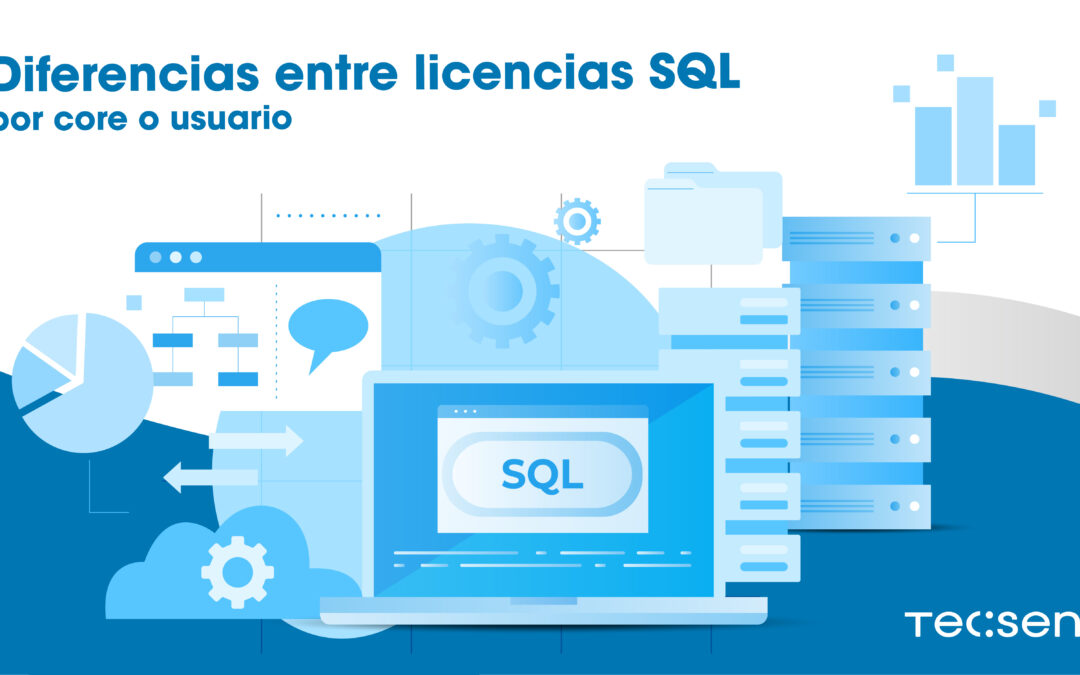Sometimes for companies, licensing their servers is a complicated task and many doubts arise. This is the case of SQL licences, which have two types of licences oriented to different needs. For this reason, and to understand which is best suited to each type of company, we are going to explain the differences between SQL licences by core or user.
What is a SQL licence?
SQL License is a type of license that gives us the right to use Microsoft SQL Server services. In order to create critical and intelligent applications using a hybrid and scalable database platform. The servers on which SQL Server is deployed can be physical or virtual.
Types of SQL Licences:
Depending on the type of server you have and the use you want to make of SQL, the type of licensing will be different. In this case we will focus on the virtual ones as this is where we find the SQL licences per core or user.
Virtual Server: In the case of a virtual server, the type of licensing with SQL will be on an individual basis and there are two types of licences:
Licensing of virtual SQL server by Core:
This type of licence requires licensing each core of the virtual server. Each licence allows the licensing of 2 cores and always with a minimum of 4 cores. This means that for a server with 16 virtual cores, 8 SQL Server licences per core will be required.
Licensing of virtual SQL server per User:
In this case, it is necessary to license each nominative user that makes use of the application that uses the SQL service, independently of the cores that the server has. This type of licensing is suitable for small environments that do not have a large number of users.
What are the differences between core and user SQL licences?
For a company that makes use of an application that uses SQL Server edition database they require to license SQL Server Standard. The database server is virtual and has a total of 16 Cores.
For this we have two scenarios:
1.In a growing company with 389 employees (for example), it will be much better to license SQL Server by Core as all employees will be able to use the application. In addition, they will be able to continue to grow in number of employees without changing their mode of licensing. In this example, 8 Standard SQL Server licences would need to be licensed as each licence covers 2 SQL Server servers.
2. In a smaller company, for example 22 employees, the licensing method that best suits your needs is per user. In such a case it would be necessary to license the 22 employees who use the application.




